News and Driving Tips

Avoiding rear end collisions – and reducing the chance of the vehicle behind colliding into your rear
Rear end collisions, also known as Hitting 3rd party in rear, are one of the most common and costly incidents on our roads – often accounting for up to 30% of collisions and accident repair costs on a company vehicle fleet. Reducing your chances of being involved in a rear end collision isn’t just about not tailgating the vehicle in front of you. There are many techniques to avoid these types of collisions, including ways of reducing the chances of the vehicle behind you hitting you! This video offers some simple advice when approaching traffic lights.
Read Article
Drivers who push in
When 2 lanes merge into one, it can become tense – especially if the drivers in the left lane have been waiting a long time and drivers then merge in from the right lane. Its not a good idea to take matters into your own hands as you are not responsible for traffic control, and it can also be dangerous, stressful and unsettling to get involved in road rage. In this video, what would you have done? Was the driver within their rights to try and prevent others pushing in?
Read Article
Why concentration is so important when driving – anything can happen!
If you take your eyes off the road for just 1 second, that could be the moment when something happens. A child could run out, the vehicle in front may brake. If you are glancing at your phone, changing radio stations, altering the air conditioning or doing anything that results in you looking away from the road ahead, that could be the moment when something happens. In this video, our driver was focused on the road ahead which was important considering what happened next…..
Read Article
Driving safely near cyclists
In 2022 The Highway Code was updated to include 3 new rules about the new ‘hierarchy of road users’. The hierarchy places those road users most at risk in the event of a collision at the top of the hierarchy. It does not remove the need for everyone to behave responsibly. Cyclists are one of those vulnerable road users, and in this video we use a stunt cyclist in a staged situation to demonstrate how dangerous it can be if you do not drive responsibly.
Read Article
How good are your hazard perception skills?
Hazard perception is an important part of safe driving. It is the ability to spot ‘clues’ to potential hazards before you arrive at the hazard itself. By spotting clues to hazards means you can change your driving style early to reduce your chances of being involved in a collision. By not spotting the clues to hazards means you end up relying on your ability to brake, swerve or react to the hazard itself and that can often be too late. In this video we look at hazard perception and what clues to potential hazards look like.
Read Article
Is it safe to use a hands free mobile phone while driving?
Watch this video to understand how distracted you can become when trying to drive and use a hands free mobile phone. The video recreates a typical scene for many company drivers who are taking hands free business calls whilst trying to also concentrate on their driving.
Read Article
New online modules provide targeted EV training
E-Training World has introduced new online driver training modules for drivers of electric cars. The three modules cover an introduction to electric vehicles, an EV awareness course for general safe driving and a speed awareness course tailored for electric cars. “We provide online driver profiling and e-driver training systems to leading insurance companies, major driver training providers, contract hire and fleet management specialists, rental companies and directly to fleets large and small,” said Jonathan Mosley, sales and marketing director at the online driver profiling and e-driver training specialist. “Many of our fleet sector partners benefit from a white-labelled version of…
Read Article
Speed limits, how can you know what the maximum speed limit is?
The first thing to understand about speed limits is the posted limit is the maximum, not the target. I am lucky to drive a modern car that has the ability to identify the posted speed limit and it displays it on my windscreen. But if you aren’t diving a vehicle that has that ability, there is a simple way to identify the actual limit. Now look at the picture, what is the speed limit? 30mph, 40mph or 50mph? The correct answer is 30mph, and you can tell it’s a 30 mph limit because there are street lamps. If there is…
Read Article
How far do you look when driving?
The one comment I used to get when I was teaching defensive driving to company drivers after I had completed a demonstration drive was, ‘don’t you look far ahead’. So how far do you look when driving? Yes, it does depend on your speed. If you are driving at 30 mph in a busy town, looking a mile ahead would not only be a waste of time, but could also be dangerous (if not impossible). However if you are on a fast road, say 60 mph or above, you should be looking to the horizon first and rapidly scanning back…
Read Article
What’s the difference between a bad or good driver?
Learner drivers these days must take a theory and Hazard Perception test before taking the practical Driving Test. However, I would argue that the Hazard Perception test they take is flawed and my reason for saying that is that hazard perception is about “perceiving” a hazard, not being able to spot a developing hazard. Let us look at the image. The clue to a potential hazard is the school kid on the left. He is not actually a hazard as he is walking along the pavement. From where the photo was taken, if you were in a car at 30…
Read Article
I can see clearly, or can you?
When driving you need two things to be able to see clearly, (1) good eyesight and (2) a clean windscreen. We have all seen on cold frosty mornings drivers with windscreens iced up, trying to look through the narrow strip at the bottom of the windscreen where the heater has defrosted the ice. But it’s not just the cold mornings that drivers are impeded by a windscreen that isn’t fully defrosted. In summer the windscreen could be covered in dead insects. The importance of screen wash cannot be understated. It is a legal requirement to keep your windscreen clean, so…
Read Article
What does this sign mean?
Hopefully, you answered to say that it means, ‘The National Speed Limit Applies’. If you didn’t ,stop reading this tip and first read the Highway Code. So, what is the National Speed limit? Is it 70 mph, 60 mph, 50 mph or 40 mph? The correct answer is all of them. The National Speed limit depends on three things (1) the type of road you are on, (2) the type of vehicle you are driving and (3) the country within the UK you are in. You might be thinking that is all very confusing, but when it comes to speed…
Read Article
White Paint is it all necessary?
Our roads are covered in white paint, but do drivers know what they all mean? Looking at the results of our online Driver Profiling system the answer is ‘No’. Yes, most drivers know you shouldn’t cross a solid white line in the centre of the road, but is that actually correct? Again, the answer is No, because the Highway Code states: “Double white lines where the line nearest to you is solid. This means you MUST NOT cross or straddle it unless it is safe, and you need to enter adjoining premises or a side road. You may cross the line if necessary,…
Read Article
Why are some junctions Give Way and others Stop?
It’s a simple question and, for once when it comes to driving, it’s a simple answer. Stop signs are used at junctions where there is limited visibility. The more involved question is, why would you build a road/junction where it limits the visibility of drivers? To answer that question, we need to go back in time. Most towns and villages have been around for 100’s of years. They might have started as a small hamlet but over the centuries they have expanded to larger towns and villages. In fact, some of our roads started life as Roman roads and have…
Read Article
Hands up who adjusted their mirror for the Driving Test, so the examiner could see you moving your head to check the mirror?
I bet someone told you to do that before your Driving Test, or you may know someone who did this. When I was assessing drivers in-vehicle, they often did just that and when I challenged them to explain why they always said, “I did it so you can see I’m checking the mirror”. If you look at any examiner/assessor marking sheet it, you will see it says “making effective use of the mirrors” I was often challenged when I would mark down someone on mirror use. They would say, “Didn’t you see me checking the mirrors, I was doing it…
Read Article
Do you drive into, or ‘reverse’ into, a parking space?
Go to any car park and you will see some cars have reversed in and some have driven into a parking space. But who is right and who is wrong? Well it does depend on what you intend to do. If, for example, you need to get to the boot, then clearly it is much easier to do so if you have driven into the space. In all other circumstances it is much better to reverse in and drive out. There are several reasons for this, some I have listed below: Driving out as apposed to reversing out allows you…
Read Article
It’s not just humans that we carry in vehicles!
If you remember the 1980’s, there was a TV advert which reminded us to “Clunk Click Every Trip”. If you don’t remember it, it was telling us to wear our seat belt every time we get in a vehicle. Now in 2020 most people do remember to belt-up, and this has been a major factor in reducing injuries. However, what some people forget is your seat belt will stop you being thrown forward in the event of a collision, but it won’t stop your pets if they aren’t strapped in or restrained in a cage. Even a small animal can…
Read Article
I know this road like the back of my hand
How many times have you either said that or heard someone else say it? I can recall many moons ago when I was an on-road driver trainer, going to a client’s house for his day’s defensive driver training. After we had done our introductions etc I asked him to take me for a short drive so that I could assess his abilities before I started the instructional part of the course. I should explain that he lived down a very quiet lane, which separated into three single track lanes (approximately 500 metres) each going to just one house. He drove…
Read Article
How and When Do You Use the Horn?
For most people, the answer is: When someone cuts me up. When I see someone, I know. If I’m a taxi driver, when I pull up outside a fare’s house. The real purpose of the horn is to ‘give an audible warning of your presence’. For example, not after someone has reversed off their driveway just in front of you, but before they have put you and/or other road users in danger. Imagine it’s a cold morning and you are driving through a residential area on your way to work. What sort of things should you be looking for? Vehicles…
Read Article
Tyres Touching Tarmac
If you have done any advanced/defensive driver training, you will know what that title means and thank you for reading my tips and for being a safe driver. If you have no idea what the title means then read on, as I hope this will spur you on to becoming an advanced driver. If you look at the image you will see that the person driving the car from which the photo was taken (the photo was taken by a passenger whilst the car was stationery at a railway level crossing), can see the vehicle in front’s rear wheels touching…
Read Article
Why is SLOW written on the road surface?
You are probably thinking, the word SLOW written on the road is telling you to slow down. I have been told by one person I was training it meant “Speed Low Official Warning” which I thought was good. But how slow should you be? The simple answer is contained in the Highway Code, which is “you must be able to stop in the distance you can see to be clear”. The other question you as a driver should be asking is, why do some junctions have SLOW painted on the road before the junction and others don’t? Basically, it all…
Read Article
Why is the road surface different under the bridge?
Have you ever noticed in the winter that the road surface is often different under or on bridges? If you haven’t you might have asked why? The answer is because concrete freezes sooner than tarmac, and in winter the cold air above and below bridges will result in ice forming sooner. Other areas that you should look for are exposed areas, such as gaps in hedges and county boundaries – because the Local Authority will only grit up to their boundary. The major roads will be gritted by the Highways Agency so won’t be affected by county boundaries. So, what…
Read Article
What does this sign mean?
You might be thinking what a stupid question, it means the road ahead is closed, but the question is what road and where? Is it after the next junction? Is it within the next ½ mile? Is it even the road the sign is placed on? The answer is any or none of the above, so if it doesn’t mean anything other than a road somewhere is closed, what’s the point of the sign? Well it does inform you that a road is closed so you should be aware and ready to find an alternative route and, even if you…
Read Article
Steering is easy isn’t it?
We can all remember our Driving Instructor telling us not to cross our hands when steering, but how many of us now do it on a regular basis? Well why shouldn’t we, it is an effective steering technique. Well I’m not going to be that Driver Trainer that says you should never do it, but I will just say one thing. Just think where your hand will end up if the airbag inflates. Imagine you are turning left and, as you turn, the vehicle in front stops and you hit the rear of them even at low speed. Most damage…
Read Article
All of a sudden! Suddenly! Or, Out of nowhere!
If you ever listen to someone talking about a road traffic crash that they were involved in, they will often use one of these phrases: “All of a sudden the traffic ahead stopped, there was nothing I could do.” “Suddenly the car pulled out of the junction, there was nothing I could have done.” “The child ran out of nowhere; I couldn’t do a thing about it.” Traffic doesn’t suddenly stop; nothing happens suddenly and where is nowhere! What drivers are saying is; “I wasn’t concentrating, I wasn’t looking, my speed was too fast, or my road positioning wasn’t good”…
Read Article
What keeps you on the road?
When you are driving a car you have four pieces of rubber about the size of your hand in contact with the planet. Other larger vehicles will have six or more pieces of rubber but when you think about it, that isn’t much. Other than keeping you on the road, what else do tyres do? They are designed to disperse water so that the tyre remains in contact with the road surface, therefore tyres have a tread patten. Without sufficient tread the vehicle could not disperse the water resulting in aquaplaning. What is the minimum tread depth? Tread depth The…
Read Article
Positioning for bends
In a previous Driving Tip, we looked at determining the correct ‘speed’ for a bend. This tip is about the correct ‘positioning’ for a bend. Firstly, you as a driver are responsible for everything you do in your vehicle, so please use common sense when driving. When driving you should position your vehicle for safety first and then to gain the most view of the road ahead, but also bear in mind that the positioning of your vehicle will give other road users an indication of your intentions. On approach to a bend you should look to position close to…
Read Article
Back behind the wheel after Covid 19 furlough
As people return to work it’s not just the Covid-19 restrictions that will have changed when they get to work. Drivers will find the roads a different environment to what they were accustomed to prior to the ‘lockdown’. But, how different will they be? Some drivers who are essential workers have got used to very quiet roads, whilst others haven’t driven further than the local supermarket for months. Some drivers who have got used to driving on quiet roads have been taking chances like speeding, not taking effective observation at junctions etc. Now to add to the problem of drivers…
Read Article
If you are a baby boomer generation, you might remember the film ‘Convoy’
The film was about a large convoy of truck drivers heading across the USA. The film also had a hit song ‘Convoy’ – sorry if you now have that playing in your head all day. So, what has a 1970’s film got to do with driving in the 21stcentury? Well we still see drivers forming convoys, and just last week I noticed several vans from the same company driving in a convoy. What is wrong with that you might ask? Well nothing until it all goes wrong. If I were a Fleet Manager, I would have a policy banning drivers…
Read Article
How to make vehicles safe
The most unsafe part of a vehicle is the nut behind the wheel. And yes, I do mean the driver. The modern vehicle is packed with safety features including the airbag, ABS and crumple zones to name just a few. But the problem with making vehicles safer is drivers become more complacent about safe driving. Just imagine if manufacturers replaced the airbag with a spike in the centre of the steering wheel, how much safer would our roads be? Drivers wouldn’t drive at inappropriate speeds, follow other vehicles so closely and would concentrate more on driving. Don’t worry I don’t…
Read Article
What’s wrong with using a mobile phone whilst driving?
The law states it is an offence to use a handheld mobile phone whilst driving (including whilst stationary with the engine running or in traffic queues). If you are caught using a handheld mobile whilst driving you can expect a fine of £200 plus 6 points on your licence. Apart from what the law states there are other good reasons for not using even handsfree mobiles phones. You might argue that talking on a phone is no different than chatting to a passenger, but there is one very big difference. When you have a passenger and are chatting to them,…
Read Article
Do you know what all the road markings mean?
OK, I’m going to assume that you know what the ‘Stop’ and ‘Give Way’ lines mean and the lines that separate the traffic on a road. But how many different types of lines are in the middle of the road? One Two Three Four Five More than five I bet that’s got you thinking! There are the Centre lines, that divide the traffic. Hazard Warning lines, that warn of a fixed hazard such as a bend, junction, or a brow of a hill. Solid white lines that mean No Overtaking – or do they? Check the Highway Code for what…
Read Article
How good a driver are you?
On a scale of 1 – 10 (1= poor, 10 = excellent) where would you rate yourself as a driver? Be honest, have you just scored yourself as an 8 or 9? If you scored either a 1 or 10 then that’s slightly worrying! You are either genuinely a terrible driver or, worse still, you are deluded about your ability. So, I guess over 95% of you have scored yourself as 8 or 9 which means you are well above the average driver. I’m not a statistician but even I know 95% of the drivers can’t be above average, surely…
Read Article
Do you Drink and Drive? Hopefully, you answered no… but do you?
Most responsible people would never drink and drive. But when we look at it more closely, do people mean they wouldn’t exceed the Drink Drive limit, or would they never allow a single drop of alcohol to pass their lips before getting behind the wheel? The drink drive limit is different for England, Wales & Northern Ireland compared to Scotland. Level of alcohol England, Wales and Northern Ireland Scotland Micrograms per 100 millilitres of breath 35 22 Milligrammes per 100 millilitres of blood 80 50 Milligrammes per 100 millilitres of urine 107 67 You’d be forgiven for being confused…
Read Article
Driver profiling and COVID-19 E-Driver Training Package
With lockdown conditions beginning to ease, and more vehicles likely to be appearing on our roads, now is a good time to offer your drivers some refresher training. E-Training World has developed an online package for just £15 + vat per driver to help get drivers back on the road safely. The online package is simple to access with a quick and easy login process, and includes: A driver risk assessment– providing you with a high, medium or low risk rating based upon 4 key criteria (Attitude / Knowledge / Observation & Concentration / Hazard Perception) COVID-19 and driving module–…
Read Article
What’s the speed limit on this road?
You may have looked in your mirrors and seen a police car following you. When this happens, the first thing you ask yourself is, am I speeding, and what is the speed limit on this road? If you have found yourself in this situation, the first thing you should ask yourself is, ‘why wasn’t I concentrating and how long has it been since I last checked your mirrors?’ You should always know the speed limit. With some modern cars that is now easy as they show both your speed and the actual limit of the road. But if you aren’t…
Read Article
Why are your tyres important?
We all know that the law requires us to have a minimum tread-depth of 1.6mm for cars, and if you drive a different type of vehicle, check the Highway Code for other legal tread-depths. But what does tread actually do? The tread is the grooves in the tyre. The grooves are designed to channel water away from under the tyre. This way you won’t slide as much. There are a variety of kinds of grooves depending on our actual need. On top quality high-performance tyres, the grooves can flex as you drive. This leads to a pump action occurring and…
Read Article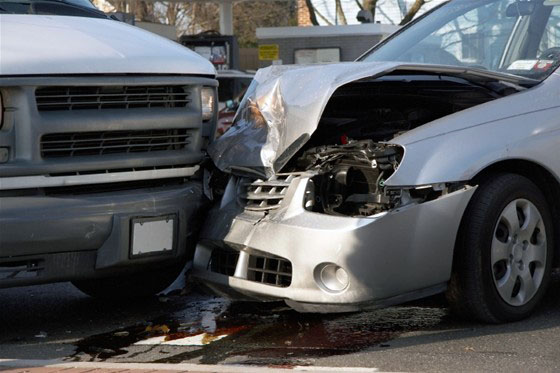
Do drivers ever learn?
If a driver is involved in a crash, do they evaluate the crash and learn some lessons? Well if it wasn’t your fault then you have nothing to learn, or do you? Let’s look at just one common accident. You are driving on a motorway and suddenly the traffic stops, you manage to stop in time but the driver crashes into the rear of you. What is there to learn? After all, you didn’t do anything wrong. The insurance company will most likely place the blame on the other driver, but you must take some of the blame in my…
Read Article
What is a skid mark?
Some of you will be thinking a skid mark is tyre rubber left on the road surface following a skid. Well, it is actually a mark left on the road caused by heat that has burnt the oils and grime that is on the road. When a vehicle skids the tyres heat up, the friction of the tyre(s) locking and skidding in turn burns the oils on the road. Skid marks are used by the police following a crash to determine things like the speed a vehicle(s) was travelling prior to a collision. However, it not just the police that…
Read Article
The roads are littered with road signs but are they important?
A lot has been said over the years about the number of road signs, with some campaigning for a reduction. There are some locations where there is certainly an argument for a cull, but the real question is. Do drivers take any notice of road signs? A while ago, we conducted a survey where driver trainers questioned company car drivers about the road signs. Whilst assessing drivers, the trainers would ask “What was the last road sign?” The instructions we gave to the trainers that they must ask the question after the driver had passed the sign, but before they…
Read Article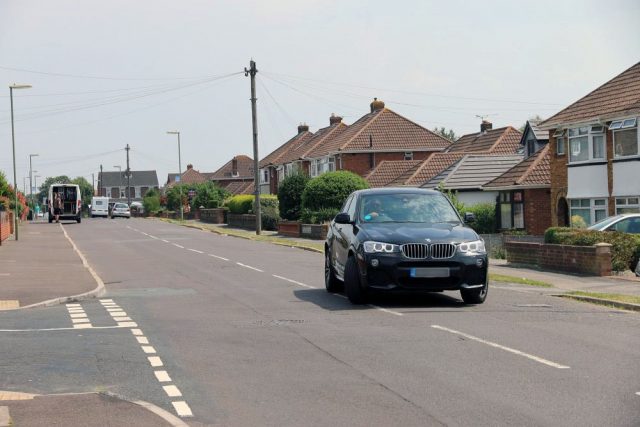
Turning right – what’s so dangerous about that?
Turning right into a side road is easy….isn’t it? You check your mirrors, signal right, and stop opposite the junction – having first positioned close to the centre line and wait for a gap in the oncoming traffic. Is that all you have to think about? The answer is obviously ‘No’, otherwise there’d be no point in writing this Driving Tip! Do you ever consider the risk of someone crashing into the rear of you, especially if the side road is just over the brow of a hill or around a bend? Many crashes are rear end collisions, so next…
Read Article
What is the correct speed for a bend?
We have all seen films where the hero drives fast and still manages to get around a bend without losing control of their car. Yet when you go around a bend a bit too fast you can get a twitchy feeling and are thankful when you make it without crashing. A Phew! That was close’moment! So, what is the correct speed for a bend? First it might seem obvious but the posted speed limit for the road is the maximum, not the target. Every bend is different, but there is a way to judge the correct speed for every bend.…
Read Article
Hazard perception or hazard avoidance?
Are you good at hazard perception or hazard avoidance? Yes, they are related but a lot of drivers do not understand the difference. Let me give you an example. A school kid runs out from behind a parked van and you manage to swerve to miss them. Are you a good driver? If you answered yes, I would agree that you had at least one of the qualities of a good driver, in that you were at least concentrating at that moment in time. However, I would say the good driver did not need to do any more than adjust…
Read Article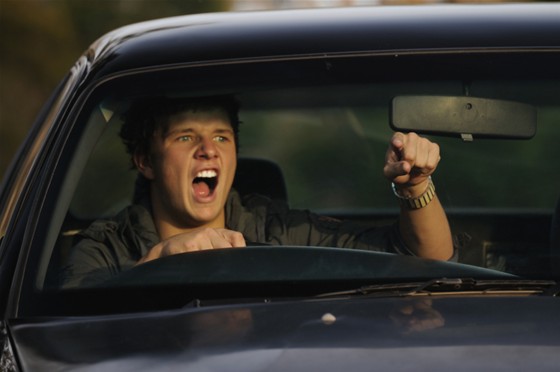
Why does your attitude have such a significant impact on how you drive?
Let’s take these 2 typical scenarios. You have just had a major argument with someone close to you and stormed out of the house. You are furious with them because you feel you are right, and they are wrong. You then realise the argument has made you late. How do you think you will drive? You have been given some good news, you’re driving to have lunch with an old friend and you’ve decided to take the scenic route because the sun is shining, you’re feeling relaxed and you’re having a good day. How do you think you will drive?…
Read Article
Why do you need to keep looking in your mirrors?
You may recall your Driving Instructor, and everyone else, telling you to keep checking the mirrors or you will fail the Driving Test. The Mirror, Signal, Manoeuvre routine (MSM) is taught by every Driving Instructor. But why do we need to check our mirrors? Before we answer that question, let me ask you a question. Imagine you are approaching a railway level crossing and, as you get close, the lights start flashing and the barriers are lowered. Should you check your mirrors before you brake? Did you answer ‘yes’ to the question? If you did, ask yourself why? Imagine when…
Read Article
Company and grey fleet drivers using lockdown to carry out online training
The numbers of drivers carrying out online driver profiling and e-driver training has risen in the past 2 weeks, with numbers logging in increasing by 18%. According to Jonathan Mosley, sales and marketing director at E-Training World, the number of completed online courses has gone up since the start of the lockdown, most likely due to people using their time working from home to carry out e-learning. “Clearly we’re all experiencing extremely tough conditions at the moment but to draw some positives it’s good to see that many drivers are using this time to complete their online profiling and training,”…
Read Article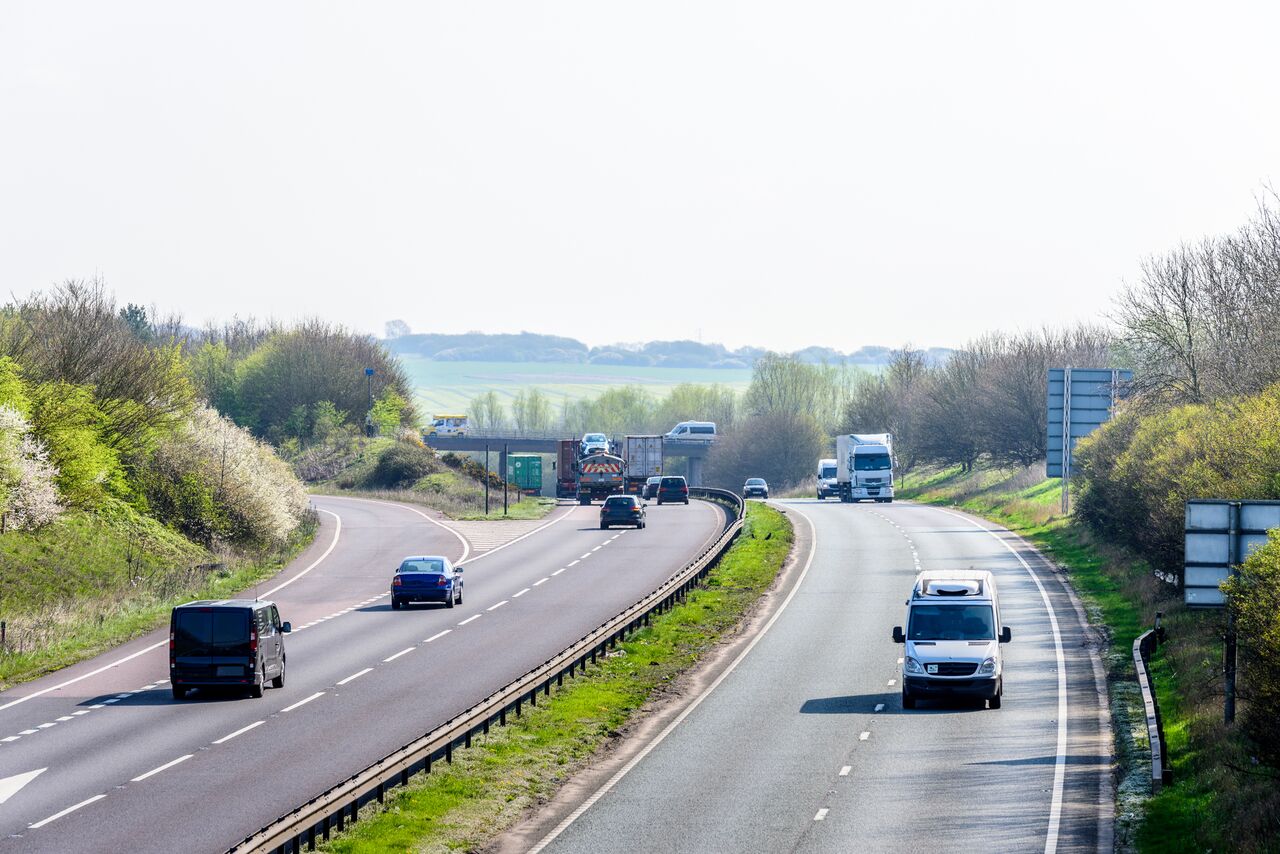
Investing in Risk Management will Deliver Instant Pay Back
Companies considering risk management for their at-work drivers should look more at the money they will save rather than focus on the cost. According to E-Training World’s managing director, Graham Hurdle, risk management is often seen as an area of expenditure to protect companies against the Corporate Manslaughter and Homicide Act 2007, and the Health and Safety Offences Act 2008. However the reality is that risk management can deliver immediate, outstanding savings for any business operating a vehicle fleet, and this should be the focus when reviewing the best solution. “By implementing a process of web-based driver risk assessments, followed…
Read Article
Driver risk dashboard a big hit with fleet managers
With growing demands for driver intelligence for insurance and fleet reporting, E-Training World’s dashboard reports have been a huge hit with fleet managers. According to Jonathan Mosley, E-Training World’s sales and marketing director, the facility for companies to see an ‘at a glance’ breakdown of the risk profile of their drivers has brought huge benefits. “Within each client’s management area, you can access all driver risk assessment results,” said Jonathan. “Not only can you see who has come out high, medium or low risk overall, but you can also see their risk rating for the four key areas of our assessment. These are…
Read Article
Core Driving Skills Remain Fundamental to Risk Assessments
Assessing drivers’ attitude, knowledge, concentration and observation, and hazard perception skills are core to delivering a meaningful and accurate driver risk assessment. That’s according to Graham Hurdle, managing director of E-Training World, who says that the fleet sector could get carried away with seeking new academic and increasingly psychometric ways of assessing drivers when, in reality, the basic principles should always apply. “Competitive forces in any sector mean that some companies are always looking at new and different ways of doing things to create enhanced selling points or a competitive edge,” said Graham. “With many products and services, by seeking…
Read Article
Partnerships with Fleet Sector Companies Continue to Grow
With many fleet sector service companies seeking to provide their clients with a fully branded online driver profiling and e-driver training system, E-Training World is seeing accelerated growth in this area. Contract hire, fleet management, insurance and driver training companies can have their own system thanks to the flexibility of E-Training World’s award winning system that enables it to be white-labelled and tailored to a company’s requirements with speed and ease. “We already partner with a wide range of companies in the fleet sector,” said Jonathan Mosley, director of sales & marketing. “Last year we introduced a new version of…
Read Article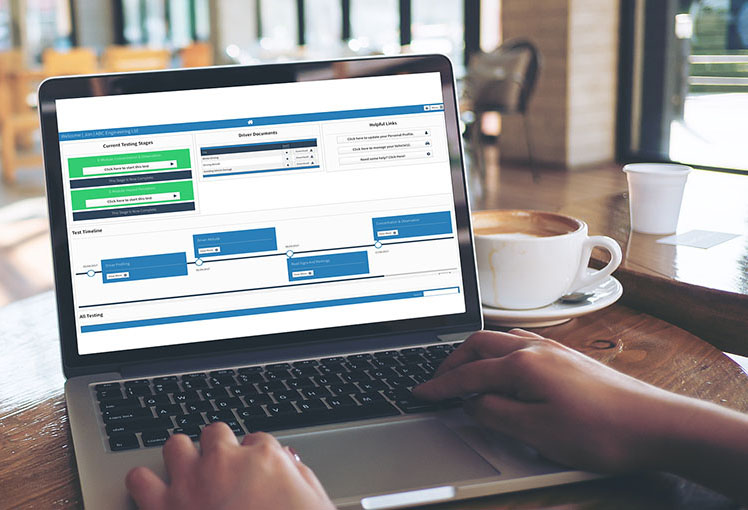
Contract Hire and fleet management companies can enjoy immediate access to a branded, tailored driver profiling and e-driver training system
Contract hire and fleet management companies seeking to bolster their proposition can enjoy the benefits of offering a fully branded, tailored online driver risk assessment and e-learning system to their customers. But Jonathan Mosley, director of sales and marketing at E-Training World says that he believes many leasing providers and fleet management specialists think the process to have their own system is far more complicated than it actually is. “If a fleet sector service company has an opportunity for online driver risk assessments and e-learning and would like to offer their client a solution, branded in their own style, or…
Read Article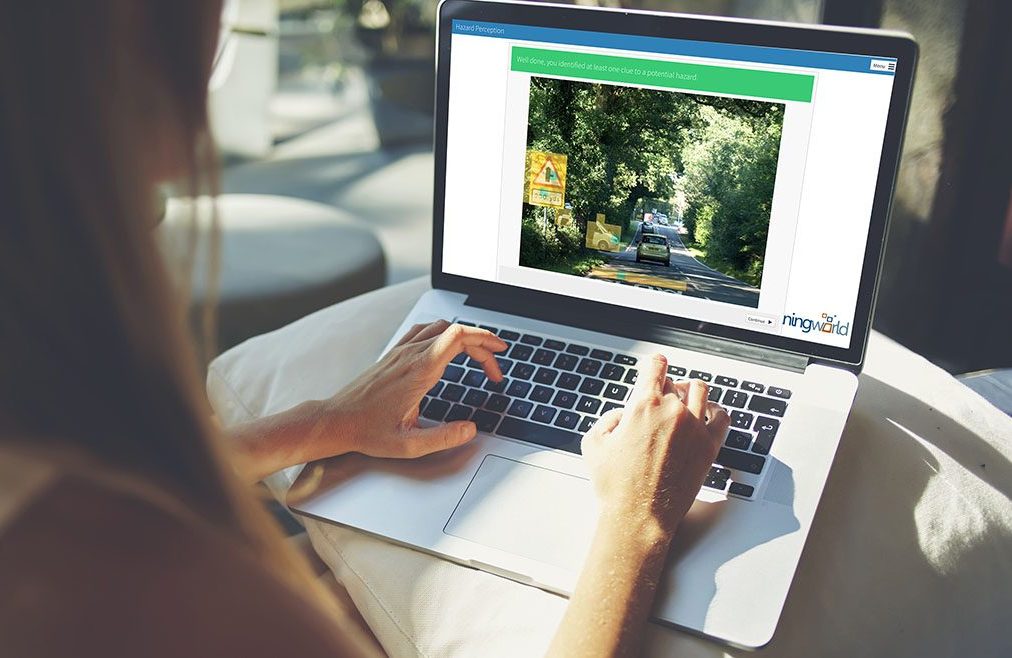
Regular Reminders about safe driving can be as important as Training
Companies that operate car, van, HGV, PCV and minibus fleets should not overlook the importance of regular reminders to all company vehicle drivers of the importance of safe driving. According to Graham Hurdle, managing director of online driver risk assessment and e-learning specialists E-Training World, frequent reminders can be a very effective way of keeping accident levels to a minimum and their importance should not be overlooked. “Look at how people drive after witnessing an accident,” said Graham. “Most drivers slow down, ease back from the vehicle in front, drive more cautiously and take far greater care until the memory…
Read Article
“Preventing bridge strikes” online training module launched for HGV and PCV drivers
Leading online driver profiling and e-driver training specialist, E-Training World, has launched a new driver training module to help HGV and PCV operators reduce bridge strikes. According to Network Rail, railways suffer approximately 1800 bridge strikes every year, which is 5 a day, costing the taxpayer some £23m. The bridge strikes e-module is aimed to change drivers’ attitude, educate them and offer them advice and guidance. It also brings to their attention the extreme costs, dangers and risks to other people’s lives that bridge strikes cause. “As with almost all accidents and collisions, driver error is usually the cause,” said…
Read Article
E-Training World launches major upgrade to its online driver profiling and e-driver training system
E-Training World has launched a major upgrade to its online driver profiling and e-driver training system with a host of new features. Called Auto Risk, there is a new driver dashboard, an ‘at-a-glance’ training timeline and the option to allocate online training automatically based upon a driver’s high, medium or low risk rating. It also offers companies outstanding flexibility, such as branding and adapting the system to your company style, tailoring the wording and frequency of reminder emails, adding bespoke profiling questions, creating custom-built client modules, adding company divisions and teams, and being able to add a company’s chosen on-road…
Read Article
Driver profiling becoming standard practice for vehicle fleets
Profiling the risk of company drivers is fast becoming standard practice for businesses operating vehicle fleets. According to Jonathan Mosley, sales and marketing director at E-Training World, it is now rare to come across companies who are not conducting some form of profiling and with large fleet operators it is the norm. “Over the last 10 years, we’ve gone from a situation where we used to speak to many companies who were looking at profiling for the first time, and in many cases they knew very little about it,” said Jonathan. “In fact, most meetings I attended were for companies…
Read Article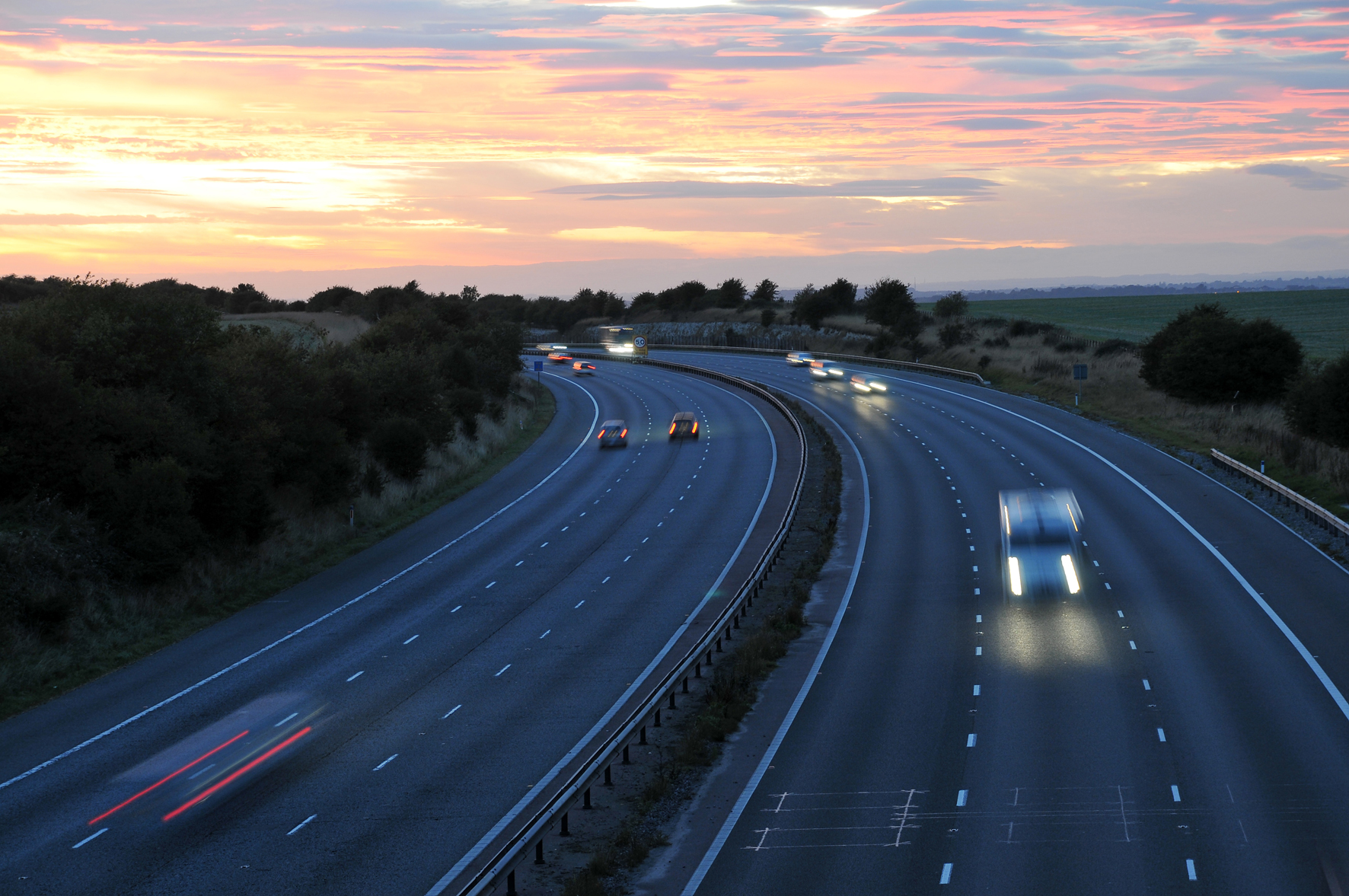
‘Avoiding rear end collisions’ is by far the most popular online driver training course
E-Training World has announced its most popular online driver training modules, with ‘Avoiding rear end collisions’ enjoying by far the greatest demand. The online driver profiling and e-driver training specialist offers a wide range of e-driver training modules for cars, LCVs, HGVs, PCVs (bus/ coach) and minibuses, with topics ranging from hazard perception and speed awareness, to motorway lane discipline and vehicle safety checks. Most companies operating vehicle fleets suffer high percentages of accidents involving a rear end collision, which is why training drivers to stop having them is at the top of most fleet manager’s wish list. “Apart from…
Read Article
Effective profiling will slash driver training costs
Using an accurate and effective profiling system prior to driver training will dramatically reduce your training costs. That’s according to Jonathan Mosley, sales and marketing director of E-Training World, who says its essential to profile drivers prior to making any decisions about driver training. This is because an online system will not only identify who needs in-vehicle intervention, it will also pinpoint what form of training is required. “If you use an accurate online profiling system, you’d expect to see less than 10% of drivers coming out as high risk and needing some form of on road training,” said Jonathan.…
Read Article
Online risk assessments and driver training a ‘must’ for van operators
Companies operating fleets of vans should pro-actively use online driver profiling and e-driver training systems in the recruitment and training of drivers. Graham Hurdle, managing director of E-Training World, says that the cost of poor driving is a huge problem for van fleets, and by not employing high risk drivers in the first place, and providing every new starter with an ongoing training plan, delivers long-term benefits. “We have a system for assessing and training drivers of vans below 3.5T, and a separate system for vehicles between 3.5T and 7.5T,” said Graham. “We’re finding an increasing number of companies using…
Read Article
Fleet managers should aim to eradicate minor vehicle damage
Small knocks, scrapes, dinks and dents may seem like an inevitable downside to running a car or van fleet. Yet Graham Hurdle, managing director of online driver training specialist, E-Training World, believes this form of ‘avoidable but costly’ vehicle damage must never be seen as acceptable. “Virtually all minor vehicle damage can be prevented,” Graham said. “After all, its mainly down to complacency, carelessness, hastiness and laziness on the part of drivers. “To give some examples, hitting fixed objects such as walls, bollards or other vehicles when parking is simply down to drivers not taking enough care. Suffering dents in…
Read Article
Assess essential skills when profiling at-work drivers
Assessing the core skills of a driver’s attitude, knowledge, observation/concentration and hazard perception skills are essential for companies with vehicle fleets when profiling risk. According to Jonathan Mosley, sales and marketing director of E-Training World, companies will enjoy maximum benefit from their driver assessments by sticking to the four cornerstones of driving ability, leading to improved driver buy-in, accurate results, a reduction in accidents and lower repair costs. “If you consider how a driver is assessed in a vehicle by an ADI (approved driving instructor), they would evaluate the driver’s attitude, ask questions to test their knowledge, look at their…
Read Article